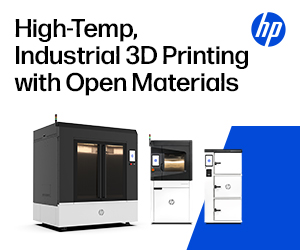3D printing is both an art and a science, and science is what we’re looking at today – particularly materials science. Every day we come across countless scientific studies having to do with 3D printing, and we’ve decided to summarize just a few recent ones for you today. 3D printer filament is an endless source for experimentation – how do we strengthen it? How do we recycle it? How do we make it, simply, better? These studies provide a few suggestions for both strengthening plastic 3D printed parts and making their creation more eco-friendly.
A 3D printed part is only as strong as the adhesion between its layers, and that’s one of the biggest problems plaguing FDM 3D printing. Manufacturers are developing 3D printers capable of delivering stronger parts, but overall, insufficient adhesion is still an obstacle to the widespread adoption of FDM 3D printing for industrial components. A group of researchers from Texas A&M University, Essentium Materials and Texas Tech, however, has developed a method of strengthening 3D printed parts by welding them through localized heating of carbon nanotubes, or CNTs, by microwave irradiation. Working as they do with CNTs, Essentium has told us, changes the physics of 3D printing.
The research is documented in a recently released paper entitled “Welding of 3D-printed carbon nanotube-polymer composites by locally induced microwave heating,” which you can access here.
“The microwave heating of the CNT-polymer composites is a function of CNT percolation, as shown through in situ infrared imaging and simulation,” the researchers state. “We apply CNT-loaded coatings to a 3D printer filament; after printing, microwave irradiation is shown to improve the weld fracture strength by 275%. These remarkable results open up entirely new design spaces for additive manufacturing and also yield new insight into the coupling between dielectric properties and radio frequency field response for nanomaterial networks.”
The coatings were applied to industrial-grade PLA through a bath coating process, and the material was then extruded through a Stacker 500 desktop 3D printer to create rectangular sample structures. The samples were then exposed to microwaves at 160ºC for 60 seconds, allowing the coated PLA to melt and recrystallize across the print lines. Higher temperatures, up to 240ºC, allowed for stronger welds.
Authors of the paper include Charles B. Sweeney, Blake A. Lackey, Martin J. Pospisil, Thomas C. Achee, Victoria K. Hicks, Aaron G. Moran, Blake R. Teipel, Mohammad A. Saed, and Micah J. Green.
Meanwhile, researchers at Michigan Technological University are studying filament recycling. In a paper entitled “Energy Payback Time of a Solar Photovoltaic Powered Waste Plastic Recyclebot System,” which you can access here, the researchers discuss the development of a solar-powered version of the “recyclebot,” an open source extruder for waste plastic that study lead author Joshua Pearce designed in 2013. Recycling plastic is expensive and still uses too much energy, the researchers point out, as it must be transported to a central location; it also requires a lot of labor to separate the different types of plastic. Collecting plastic waste and recycling it into filament on-site with a recyclebot could cut back on the energy required for mass centralized recycling.
“Using a recyclebot in the location that plastic waste is generated not only saves the energy required for transportation, but can also increase personal income when the filament is sold,” the researchers explain. “As 3-D printing technology is developing to be of wide applicability for distributed manufacturing throughout the world, an expensive commercial filament is one of the remaining impediments to the extended popularity of 3-D printing. The application of a recyclebot, which can produce a filament for about 10 cents per kg of electricity, can further improve the economics of 3D printing and extend distributed manufacturing.”
The study calculates the energy payback time, or EPBT, of a solar-powered recyclebot as compared to a conventionally powered one, and finds that producing a PLA filament with a solar-powered recyclebot has an EPBT of about one month, a 96% decrease compared to that of a single crystal PV system.
“It is clear that solar PV powered recyclebots are an effective method to reduce energy use and protect the environment to meet the requirement of sustainable development,” the paper concludes.
Authors of the paper include Shan Zhong, Pratiksha Rakhe, and Joshua M. Pearce.
Currently, there’s a high level of enthusiasm for sous vide cooking going around. What is sous vide, you may ask? It involves vacuum-sealing food in a plastic bag and then cooking it to a specific temperature in a water bath. It’s supposed to produce food that’s evenly cooked to perfection, and naturally someone decided to try applying the technique to 3D printing. Engineer Justin Lam conducted an experiment in which he 3D printed several PLA blocks and annealed them in a water bath to see if they could be strengthened.
Annealing is fairly common for 3D printed parts; many people place them in an oven to get the material to soften and re-crystallize. Unfortunately, as Lam points out, ovens aren’t great at producing even heating, so he decided to try the sous vide technique instead.
 The PLA parts were submerged in water at 70°C for 30 minutes, and then half of them were cooled to room temperature in air in less than 10 minutes. The other half were regulated to cool to room temperature in over 4 hours. Then, a point load was applied to each test block to assess whether the rate of cooling affected the strength of the parts at all. Lam discovered that annealing the parts in a water bath did produce a more stable and uniform heat source, resulting in parts less prone to warpage from uneven heating. Under some circumstances, annealing the PLA in water did result in increased mechanical strength compared to the non-annealed control prints – however, Lam says, “Testing was fairly inconclusive due to the inconsistency/human error in rate of applied force.”
The PLA parts were submerged in water at 70°C for 30 minutes, and then half of them were cooled to room temperature in air in less than 10 minutes. The other half were regulated to cool to room temperature in over 4 hours. Then, a point load was applied to each test block to assess whether the rate of cooling affected the strength of the parts at all. Lam discovered that annealing the parts in a water bath did produce a more stable and uniform heat source, resulting in parts less prone to warpage from uneven heating. Under some circumstances, annealing the PLA in water did result in increased mechanical strength compared to the non-annealed control prints – however, Lam says, “Testing was fairly inconclusive due to the inconsistency/human error in rate of applied force.”
“Despite sous vide being home in the kitchen, I’m still adamant that it also has a place in heat treatment applications,” he adds. “The benefits of having an easily regulated, uniform temperature controlled environment is advantageous. However, limitations are evident in scaling as it may not be feasible to have a large tank of heated water in industrial settings when an oven may be cheaper and achieve similar results.”
You can read Lam’s full experiment here.
Discuss in the Material Studies forum at 3DPB.com.
Subscribe to Our Email Newsletter
Stay up-to-date on all the latest news from the 3D printing industry and receive information and offers from third party vendors.
Print Services
Upload your 3D Models and get them printed quickly and efficiently.
You May Also Like
3D Printing Predictions 2026: Industrial Production in Metal Additive Manufacturing
The industrial metal additive manufacturing world is splitting, with commoditization and lower-cost parts driving the production of millions of components for consumer electronics, machinery, dental, and beyond. Meanwhile, large parts...
How 3D Printing is Making the World a Better Place, One Medical Innovation at a Time
One of the most significant sectors for 3D printing applications is the healthcare field. According to an AM Research report, the 3D printed medical device market is estimated to reach...
A Year in 3D Prints: A Visual Journey Through 2025 in AM
2025 was a year of milestones and experimentation in additive manufacturing (AM), marked not only by technical progress but also by the mergers, acquisitions, and restructurings that reshaped the industry,...
3D Printing News Briefs, December 17, 2025: Standards, Ballistics, Dental Aligners, & More
Today’s 3D Printing News Briefs is a bit of a mixed bag, including stories about standards, ballistics 3D printing, dental aligners, and more. Read on for all the details! DNV...
































